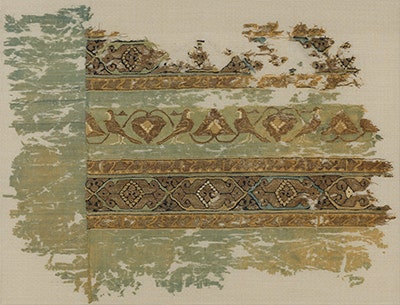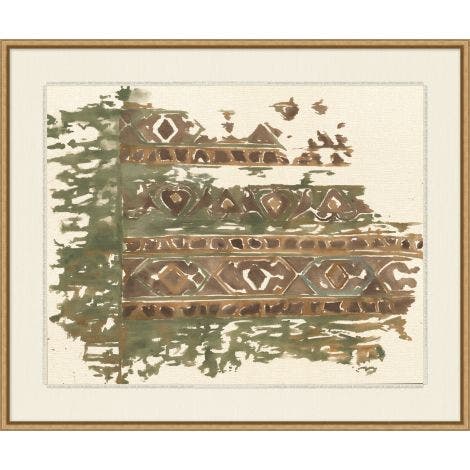Local Storage seems to be disabled in your browser.
For the best experience on our site, be sure to turn on Local Storage in your browser.
The Unraveling

This Met x Wendover Art Group design is a reproduction of an original work of art in The Metropolitan Museum of Art collection.
Our inspiration: Tiraz Fragment
Attributed to Egypt
Silk; tapestry weave; 11th century
Gift of George D. Pratt, 1931 31.106.66
Flax, from which linen fibers were made, was the main cash crop of Egypt during the Fatimid period, and the trade of linen helped sustain the economy. The court gave sumptuous fabrics like this one as ambassadorial gifts, with the caliphal treasuries known for housing fabrics of remarkable splendor. Surviving Fatimid textiles are often inscribed or adorned with ornamental bands featuring rows of animals and other motifs. On this fragment, the central theme consists of a series of birds flanking reciprocal half-palmettes, all of which are linked by a scrolling vine woven in silk. Mirroring this rhythmic alternation are registers filled with cartouches, each containing an abstracted arabesque. The monotonous repetition is broken by the color of their respective backgrounds, which flows from pastel blue to yellow and green.

This Met x Wendover Art Group design is a reproduction of an original work of art in The Metropolitan Museum of Art collection.
Our inspiration: Tiraz Fragment
Attributed to Egypt
Silk; tapestry weave; 11th century
Gift of George D. Pratt, 1931 31.106.66
Flax, from which linen fibers were made, was the main cash crop of Egypt during the Fatimid period, and the trade of linen helped sustain the economy. The court gave sumptuous fabrics like this one as ambassadorial gifts, with the caliphal treasuries known for housing fabrics of remarkable splendor. Surviving Fatimid textiles are often inscribed or adorned with ornamental bands featuring rows of animals and other motifs. On this fragment, the central theme consists of a series of birds flanking reciprocal half-palmettes, all of which are linked by a scrolling vine woven in silk. Mirroring this rhythmic alternation are registers filled with cartouches, each containing an abstracted arabesque. The monotonous repetition is broken by the color of their respective backgrounds, which flows from pastel blue to yellow and green.



